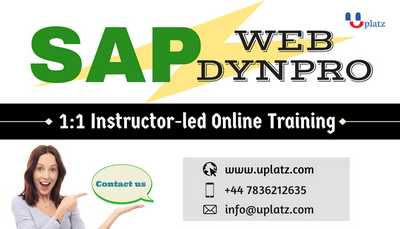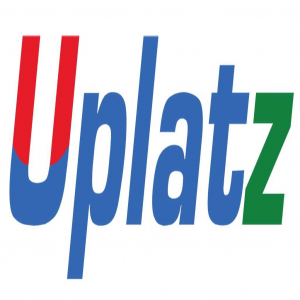SAP Web Dynpro for ABAP Training

Welcome to Uplatz, the biggest IT & SAP training provider in Europe!
Uplatz is well known for providing instructor-led training and video-based courses on SAP, Oracle, Salesforce, AWS, Big Data, Machine Learning, Python, R, SQL, Google & Microsoft Technologies, and Digital Marketing.
SAP and AWS training courses are currently the most sought-after courses globally.
An SAP consultant on an average earns a package of $80,000 ($100,000) per annum based on the skills and experience.
To learn this course -
1) Pay the course fees directly through secured payment gateway by clicking "Pay Now" and relax. After this Uplatz team will take over and get the course conducted for you.
2) If you are based in UK or India, you can directly pay to our respective bank accounts. To do this, you just need to send an email to info@uplatz.com and the Uplatz team will respond back with the details.
For any questions, queries, or payment related issues, simply contact us at -
Call: +44 7836 212635
WhatsApp: +44 7836 212635
Email: info@uplatz.com
https://training.uplatz.com
SAP WebDynpro is a great modeling environment whitch stores the user-interface details in the form of metadata. We can write less code and fix bugs in a shorter time with lesser effort. It increases a programmer’s productivity by manifolds.
Webdynpro is nothing but one framework for developement of user interface for use with SAP NetWeaver.It support programming for different platform such as JAVA, ABAP, .NET
SAP Web Dynpro for ABAP Training
Unit 1: Course Overview/ WebDynpro Introduction
• Course Overview
• Evolution of SAP Software User Interface Solutions
• Overview of the Web Dynpro Solution / Positioning
• Development considerations
Building Blocks
• How do the pieces work together?
• ABAP OO Overview- Basic Concepts refresher
Unit 2: WebDynpro Controllers
• Controllers - What are they?
• Controllers - Detailed Review
• Controllers - Usage in Navigation
Unit 3: Data Hierarchy Trees/ WebDynpro Contexts
• Contexts, What are they?
• Contexts – How to build them
• Definition and Data Binding Techniques
Unit 4: User Interface Components
• Overview of User Interface Components
• Elementary UI Elements (e.g. Input, Captions, etc.)
• Complex UI Elements (e.g. Tables)
• Container UI Elements (e.g. View Containers, Trays, ALV Integration)
Unit 5: Programming extensions
• Overview of User Programming Extensions, placement, hook methods
• Context Data Retrieval, Supply Methods, Updating Values
• Debugging Techniques
• Programmed Text Retrieval via OTR and Assistance Class
• Error Handling and Messages
• Programmed Value Help Options
• Value Help via Object Value Selector
Unit 6: Advanced Programming Techniques
• Dynamic Programming Techniques for UI and Context
• Interfaces and Component reusability
• Creating and Invoking Dialog Windows/ Pop-up windows
• Window Controller Navigation/ Exits
• ICF Service/ Logon considerations
Unit 7: Specialized Techniques
• Customizing and Personalization
• Adobe Forms Integration
• Portal Integration Overview
• Programming Considerations/ Performance








